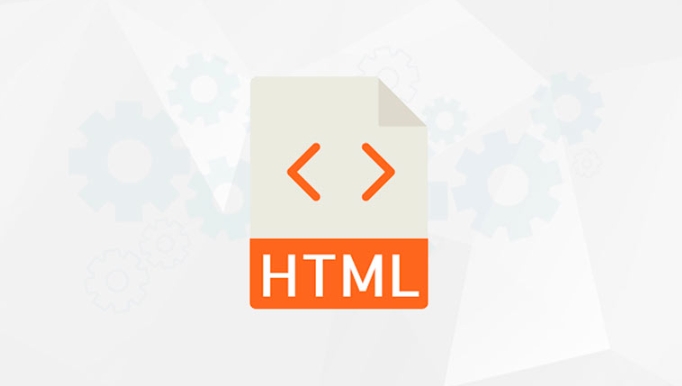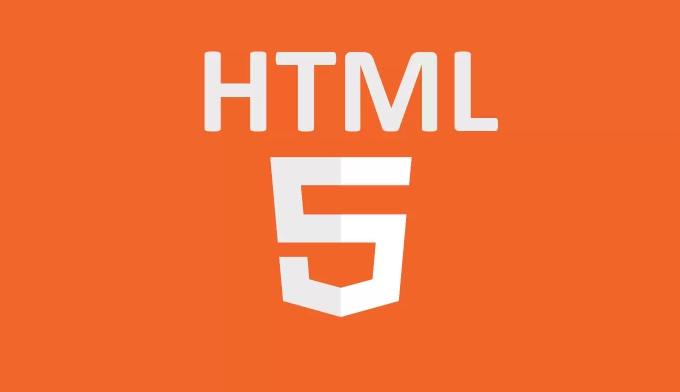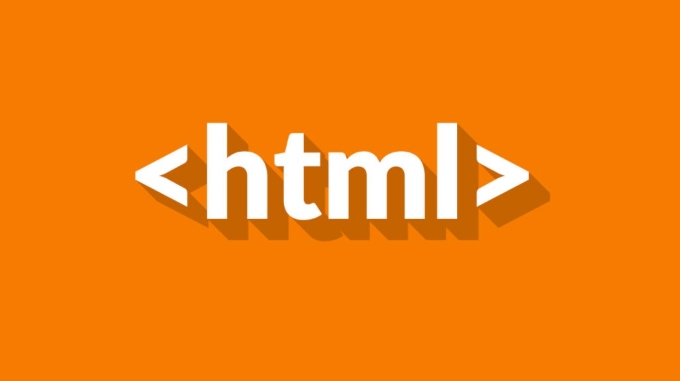Web Workers is a background thread scripting technology provided by HTML to improve web page performance. It keeps the page responsive and smooth by performing compute-intensive tasks (such as image processing, data encryption, large amounts of data sorting) in independent threads. 1. Worker does not have permission to access the DOM, and can only perform logical processing; 2. Use the postMessage() method to communicate with the main thread; 3. Transfer data will be copied rather than shared, and large objects may bring performance overhead; 4. Make sure the script path is correct when creating; 5. Mainstream browsers have good support, but debugging requires the help of developer tools. Suitable for tasks that require isolated execution environments, long runs, or complex calculations.

Web Workers provides a way to run scripts in background threads in HTML, which can avoid blocking the main thread, thereby improving web page responsiveness and performance. If you are working on some compute-intensive tasks (such as image processing, data encryption, or sorting large amounts of data), Web Workers is a very practical option.

What is a Web Worker?
Simply put, Web Worker is a JavaScript file running in the browser background. It does not share the execution context with the main page, so it will not affect the smoothness of the user interface. You can create a Worker instance in the main thread and communicate with it through postMessage() method.
It should be noted that Worker does not have permission to access the DOM and cannot operate elements on the page. They are suitable for purely logical processing, long-running tasks, or scenarios where execution environments need to be isolated.

Common uses include:
- Handle complex calculations
- Timing tasks (such as polling)
- Data preload or cache
- Audio/video encoding and decoding
How to create and use a Web Worker?
Creating a Web Worker is actually very simple. First, you need to prepare a separate JavaScript file that will serve as a Worker script. Then, instantiate Worker object in the main page and start communication.
// The code in the main thread const worker = new Worker('worker.js');
worker.postMessage('Hello Worker'); // Send a message worker.onmessage = function(event) {
console.log('Reply received:', event.data);
}; // worker.js file content onmessage = function(event) {
console.log('Worker received the message:', event.data);
postMessage('Hello main thread');
};This communication method is asynchronous and is based on the messaging mechanism, so it will not cause page lag. But it should be noted that the transmitted data will be copied rather than shared, so if the transmitted large objects, it may bring performance overhead.

Notes on using Web Workers
Although Web Workers are powerful, there are some details to pay attention to in actual use:
- DOM cannot be accessed : Because Worker runs in a standalone thread and does not have window or document objects.
- Path issue : Make sure that the script path passed in when creating Worker is correct, otherwise an error will be thrown.
- Good compatibility but need to be checked : Mainstream modern browsers support Web Workers, but if you need to support very old devices, you still have to confirm.
- Debugging is a little troublesome : Worker's debugging is not as intuitive as ordinary scripts, and requires the use of browser developer tools to view its output.
In addition, if you need multiple workers to work together, or if you want the Worker to be able to share data with other threads or main threads, you may want to consider using SharedWorker or combining other technologies such as the BroadcastChannel API to achieve more complex communication needs.
Conclusion
Web Workers provides a lightweight multi-threading solution that is very helpful for improving the performance of web applications. As long as your tasks are suitable for running in the background and do not require direct operation of the DOM, Worker is a tool worth trying. It is actually not difficult to use, just be careful not to pass too heavy data around frequently, otherwise it will affect performance.
Basically that's it.
The above is the detailed content of Working with HTML Web Workers. For more information, please follow other related articles on the PHP Chinese website!

Hot AI Tools

Undress AI Tool
Undress images for free

Undresser.AI Undress
AI-powered app for creating realistic nude photos

AI Clothes Remover
Online AI tool for removing clothes from photos.

Clothoff.io
AI clothes remover

Video Face Swap
Swap faces in any video effortlessly with our completely free AI face swap tool!

Hot Article

Hot Tools

Notepad++7.3.1
Easy-to-use and free code editor

SublimeText3 Chinese version
Chinese version, very easy to use

Zend Studio 13.0.1
Powerful PHP integrated development environment

Dreamweaver CS6
Visual web development tools

SublimeText3 Mac version
God-level code editing software (SublimeText3)
 Applying Semantic Structure with article, section, and aside in HTML
Jul 05, 2025 am 02:03 AM
Applying Semantic Structure with article, section, and aside in HTML
Jul 05, 2025 am 02:03 AM
The rational use of semantic tags in HTML can improve page structure clarity, accessibility and SEO effects. 1. Used for independent content blocks, such as blog posts or comments, it must be self-contained; 2. Used for classification related content, usually including titles, and is suitable for different modules of the page; 3. Used for auxiliary information related to the main content but not core, such as sidebar recommendations or author profiles. In actual development, labels should be combined and other, avoid excessive nesting, keep the structure simple, and verify the rationality of the structure through developer tools.
 Implementing Clickable Buttons Using the HTML button Element
Jul 07, 2025 am 02:31 AM
Implementing Clickable Buttons Using the HTML button Element
Jul 07, 2025 am 02:31 AM
To use HTML button elements to achieve clickable buttons, you must first master its basic usage and common precautions. 1. Create buttons with tags and define behaviors through type attributes (such as button, submit, reset), which is submitted by default; 2. Add interactive functions through JavaScript, which can be written inline or bind event listeners through ID to improve maintenance; 3. Use CSS to customize styles, including background color, border, rounded corners and hover/active status effects to enhance user experience; 4. Pay attention to common problems: make sure that the disabled attribute is not enabled, JS events are correctly bound, layout occlusion, and use the help of developer tools to troubleshoot exceptions. Master this
 Configuring Document Metadata Within the HTML head Element
Jul 09, 2025 am 02:30 AM
Configuring Document Metadata Within the HTML head Element
Jul 09, 2025 am 02:30 AM
Metadata in HTMLhead is crucial for SEO, social sharing, and browser behavior. 1. Set the page title and description, use and keep it concise and unique; 2. Add OpenGraph and Twitter card information to optimize social sharing effects, pay attention to the image size and use debugging tools to test; 3. Define the character set and viewport settings to ensure multi-language support is adapted to the mobile terminal; 4. Optional tags such as author copyright, robots control and canonical prevent duplicate content should also be configured reasonably.
 Best HTML tutorial for beginners in 2025
Jul 08, 2025 am 12:25 AM
Best HTML tutorial for beginners in 2025
Jul 08, 2025 am 12:25 AM
TolearnHTMLin2025,chooseatutorialthatbalanceshands-onpracticewithmodernstandardsandintegratesCSSandJavaScriptbasics.1.Prioritizehands-onlearningwithstep-by-stepprojectslikebuildingapersonalprofileorbloglayout.2.EnsureitcoversmodernHTMLelementssuchas,
 How to associate captions with images or media using the html figure and figcaption elements?
Jul 07, 2025 am 02:30 AM
How to associate captions with images or media using the html figure and figcaption elements?
Jul 07, 2025 am 02:30 AM
Using HTML sums allows for intuitive and semantic clarity to add caption text to images or media. 1. Used to wrap independent media content, such as pictures, videos or code blocks; 2. It is placed as its explanatory text, and can be located above or below the media; 3. They not only improve the clarity of the page structure, but also enhance accessibility and SEO effect; 4. When using it, you should pay attention to avoid abuse, and apply to content that needs to be emphasized and accompanied by description, rather than ordinary decorative pictures; 5. The alt attribute that cannot be ignored, which is different from figcaption; 6. The figcaption is flexible and can be placed at the top or bottom of the figure as needed. Using these two tags correctly helps to build semantic and easy to understand web content.
 HTML for email templates tutorial
Jul 10, 2025 pm 02:01 PM
HTML for email templates tutorial
Jul 10, 2025 pm 02:01 PM
How to make HTML mail templates with good compatibility? First, you need to build a structure with tables to avoid using div flex or grid layout; secondly, all styles must be inlined and cannot rely on external CSS; then the picture should be added with alt description and use a public URL, and the buttons should be simulated with a table or td with background color; finally, you must test and adjust the details on multiple clients.
 What are the most commonly used global attributes in html?
Jul 10, 2025 am 10:58 AM
What are the most commonly used global attributes in html?
Jul 10, 2025 am 10:58 AM
class, id, style, data-, and title are the most commonly used global attributes in HTML. class is used to specify one or more class names to facilitate style setting and JavaScript operations; id provides unique identifiers for elements, suitable for anchor jumps and JavaScript control; style allows for inline styles to be added, suitable for temporary debugging but not recommended for large-scale use; data-properties are used to store custom data, which is convenient for front-end and back-end interaction; title is used to add mouseover prompts, but its style and behavior are limited by the browser. Reasonable selection of these attributes can improve development efficiency and user experience.
 How to handle forms submission in HTML without a server?
Jul 09, 2025 am 01:14 AM
How to handle forms submission in HTML without a server?
Jul 09, 2025 am 01:14 AM
When there is no backend server, HTML form submission can still be processed through front-end technology or third-party services. Specific methods include: 1. Use JavaScript to intercept form submissions to achieve input verification and user feedback, but the data will not be persisted; 2. Use third-party serverless form services such as Formspree to collect data and provide email notification and redirection functions; 3. Use localStorage to store temporary client data, which is suitable for saving user preferences or managing single-page application status, but is not suitable for long-term storage of sensitive information.






